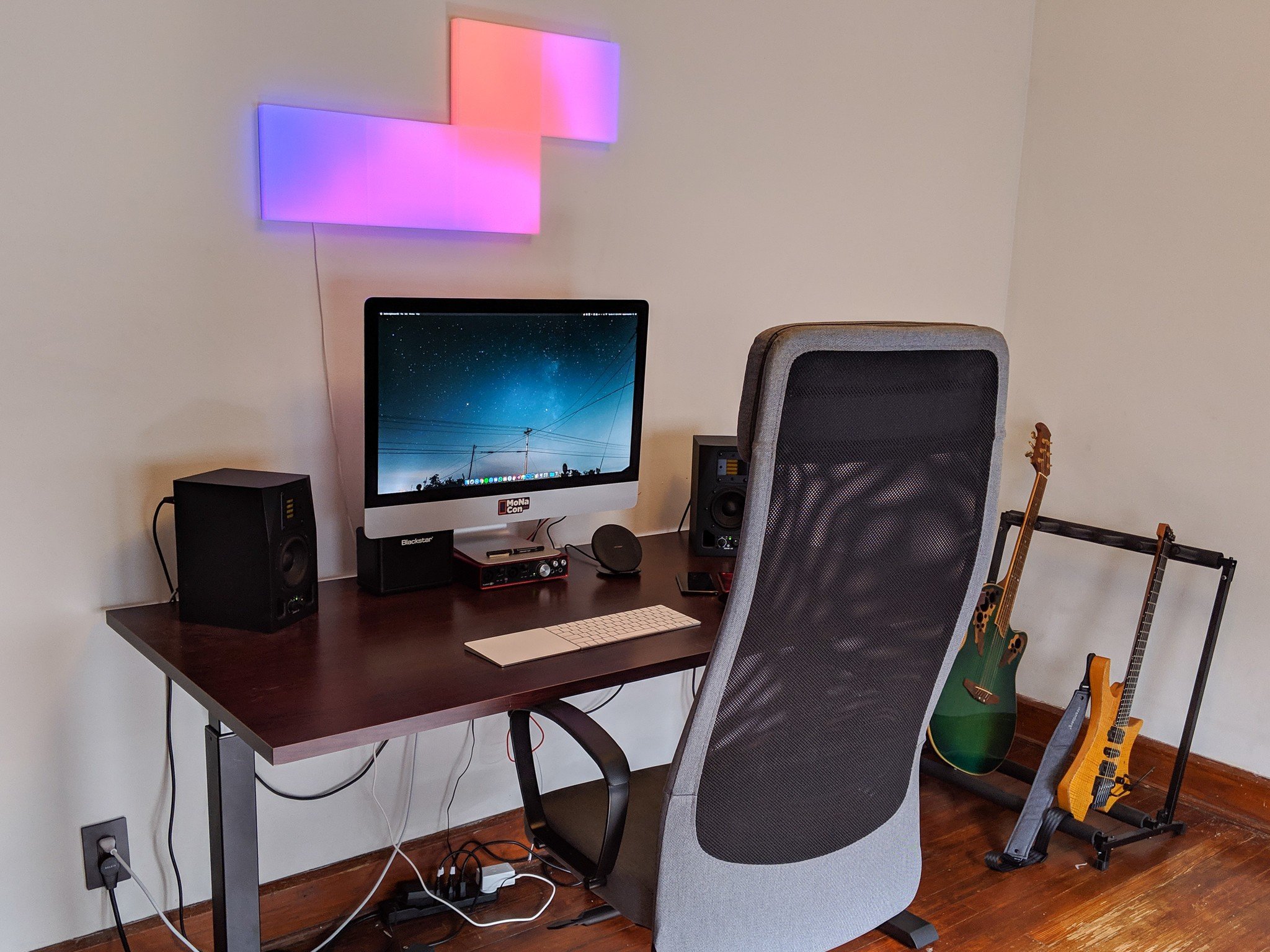LIFX has been a big part of my home for some time now. I bought a few of the company's LIFX+ smart bulbs a few years back when my local store didn't have the Philips Hue bulbs I was actually looking for in stock — as luck would have it, I liked them even better. Even now that I have both brands in my house, I still prefer the LIFX bulbs, which are brighter, more vibrant, and work without a hub.
With almost every room of my house outfitted with a smart bulb these days, I was elated to try out Tile, the company's modular series of wall-mounted LED panels that, just like the smart bulbs, can emit any of millions of colors and totally change the look and atmosphere of a room in seconds. For the most part, I love these too, but there are a few quirks that keep me from immediately recommending them to everyone I know.
The good
- Extremely bright and colorful
- Easy to mount
- Customizable layout
- Interactive presets
The bad
- Expensive
- Finicky software
- LED zones visible
LIFX Tile What I like
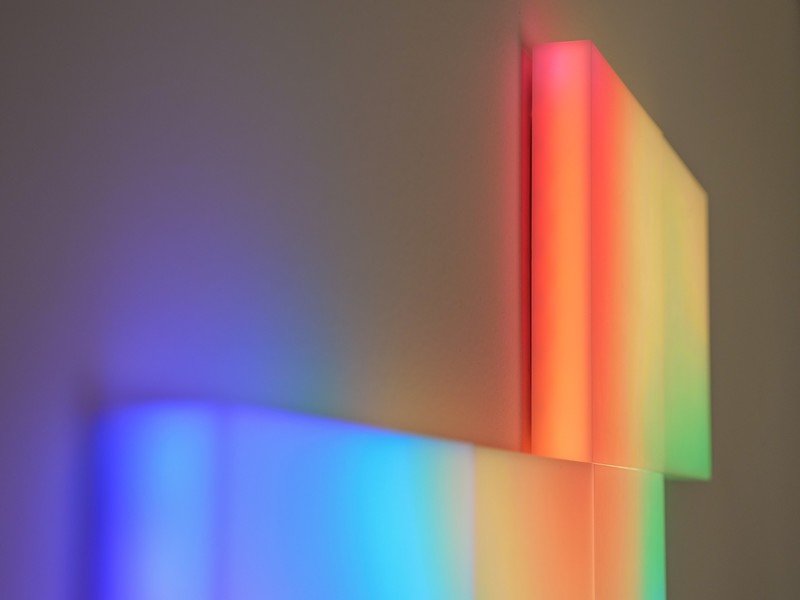
I've been using LIFX Tiles for about two months now; I got a pack of five (you can also save some money and buy them in packs of three) and set them up in my office right after coming home from MWC back in early February. Luckily, even in my jet-lagged, sleep-deprived state, setting them up was fairly painless.
Each Tile is a lightweight plastic square that's roughly 8 inches in each direction, and about an inch thick. 3M velcro strips come pre-installed on every Tile for easy tool-less installation that won't damage your walls, and there are power in and out ports that work with the included proprietary connectors. There's no specific order you need to connect the Tiles in, and even the power ports can work in either direction — though it's still best to mount each Tile with the logo on the back facing upright.
It's like having some sort of weird, modular lava lamp on your wall — and I mean that in the best way possible.
The hardest part of the installation is honestly just figuring out how you want to arrange your Tiles. The packaging comes with a few examples to get you started, but I went with my own arrangement that I think looks pretty nice. Once you've figured out your layout, all you need to do is wire the Tiles together and stick them to your wall. As soon as you plug in the main power supply, be ready for them all to light up — they're very bright, I'd recommend setting them up in a naturally lit room so it's not too jarring.
That's what I love about the Tiles, though. They get up to a combined 2100 lumens with five panels (dimmable, of course), and if even that's not enough (trust me, it is), you can attach another five and run up to ten Tiles from a single power supply. Just like the company's smart bulbs, the Tiles are also capable of over 16 million colors, and you get all sorts of fun themes within the LIFX app.
I usually leave my Tiles on the Morph theme, which gradually flows through a gradient of different colors. It reminds me a lot of the graphic visualizers that used to be popular in music apps like iTunes and Windows Media Player, or even some kind of strange, wall-mounted lava lamp. If there are any particular colors you tend to gravitate towards, you can also create your own presets, but no matter what you set them to, the Tiles add a nice ambiance to your room, and can even be your main light source (though I prefer combining them with ceiling lights).
Something I've really come to appreciate in one of the recent updates to the Tile is the new Tap functionality, which enables touch control. You can double tap the Tiles to turn them on or off, and tap once to cycle between effects. Since there's no option for a hardware switch, this has been a very welcome feature that makes using the Tiles much more convenient.
LIFX Tile What could be improved
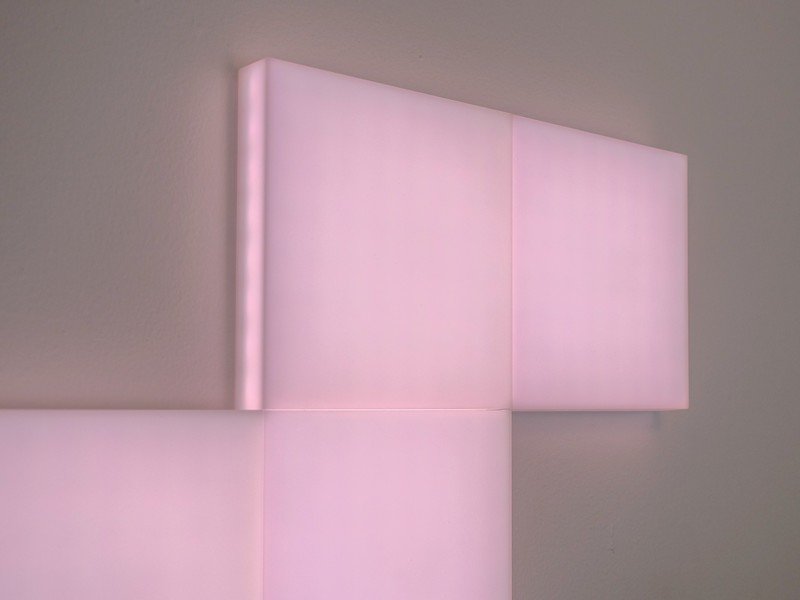
As much as I love having the Tiles as a decorative addition to my office, they're not perfect. That Tap functionality is where my problems start. Enabling Tap within the software is extremely finicky; I had to continually enable the setting, then relaunch the app and start over multiple times before it actually started working.
I've also lost track of how many times I've woken up in the morning and walked past my office room to find that my Tiles came on overnight for no discernible reason; LIFX offers the ability to schedule your Tiles to turn on and off at certain times throughout the day, but I've never scheduled mine. It's not a deal breaker, but this experience would definitely keep me from putting Tiles in my bedroom.
Far too often, the Tiles turn themselves on overnight.
You're fairly limited with what you can do with your voice, too. The Tiles are compatible with Google Assistant, Alexa, and Apple HomeKit, but in my experience with the former, I can't do much beyond turning the lights on or off and changing to non-specific colors like purple or green. I can't seem to switch to themes like my preferred Morph using my voice, so most of the time I just pull out my phone and use the app instead.
And for as nice as the Tiles can look at times, it's also pretty easy to spot the 64 LED zones within each panel, especially during the day. When you're relatively close to the Tiles (mine sit just behind my monitor at my desk), there's a visible grid where the LEDs sit underneath the plastic, along with a sort of pinkish light bleed along the edges when displaying white.
I also wish there was some sort of built-in rechargeable battery that would let me use the Tiles without a dangling cable, though I understand that adding a battery would probably make the Tiles too heavy to mount with 3M adhesive. For now, if you want to pull off a cordless look, you need to hide the power cable behind your wall, which not everyone is comfortable doing — I'm certainly not.
LIFX Tile Should you buy it?
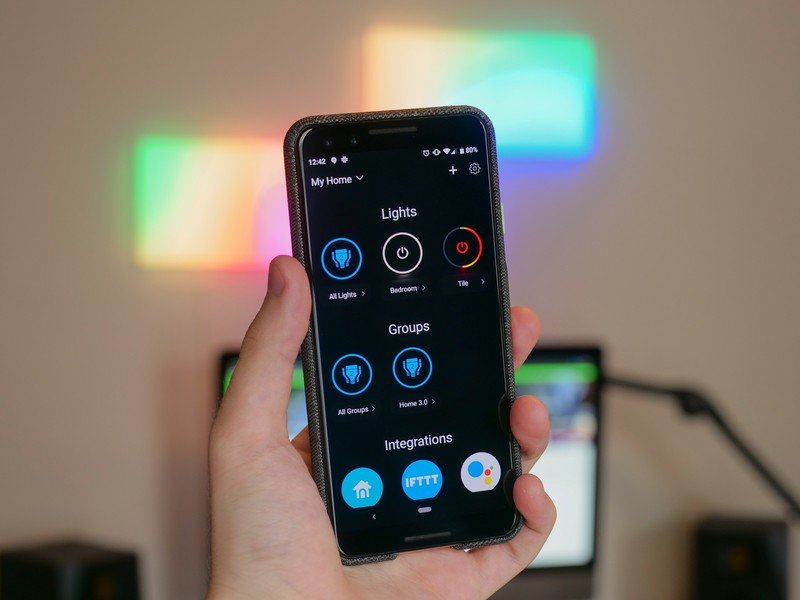
It's hard to say whether the Tiles are a good fit for most homes. They're almost entirely decorative, and even ignoring my various complaints, it's just a frivolous purchase that I can't imagine anyone really needing. But the same can be said about the similarly priced Nanoleaf Aurora panels, and necessity is sort of besides the point.
3.5 out of 5
These add a unique ambiance to your room that can't easily be replicated with other products, and the modular approach of rearrangeable panels means that every setup can be unique. The Tiles aren't a necessary part of any home, but if you have the spare cash and want to liven up your living room or office, there are certainly less interesting ways to decorate your wall.
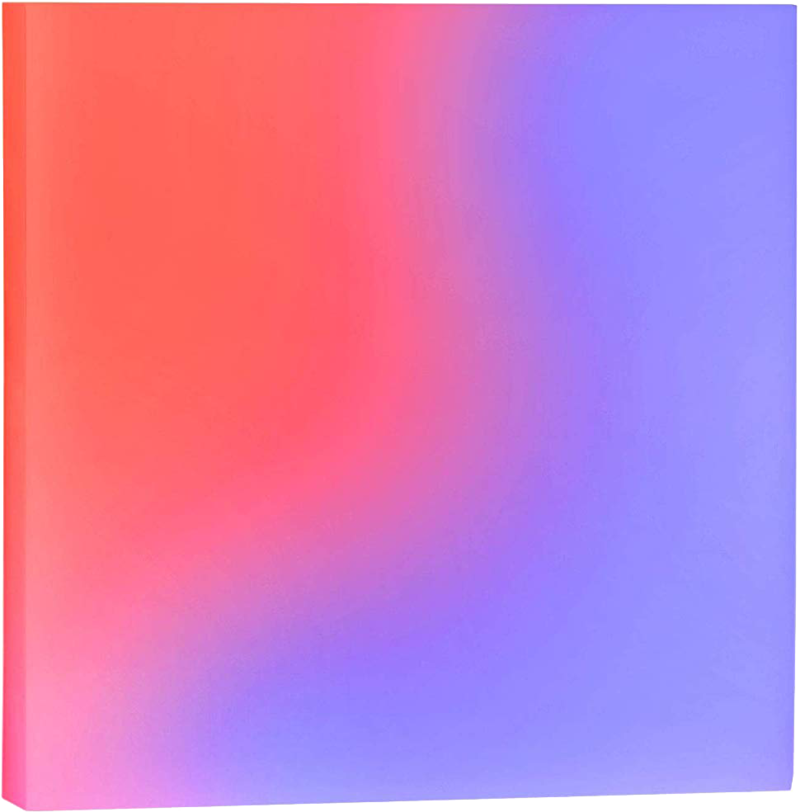
A beautiful but flawed addition to your room.
The Tiles aren't as universally useful as LIFX's smart bulbs, but they add a lovely ambiance to any room and get bright enough to be able to serve as your only light source. The modular design and theming are great to have, even if the software is a bit buggy.
Hayato was a product reviewer and video editor for Android Central.
